Bird’s-foot Trefoil: An Excellent Plant
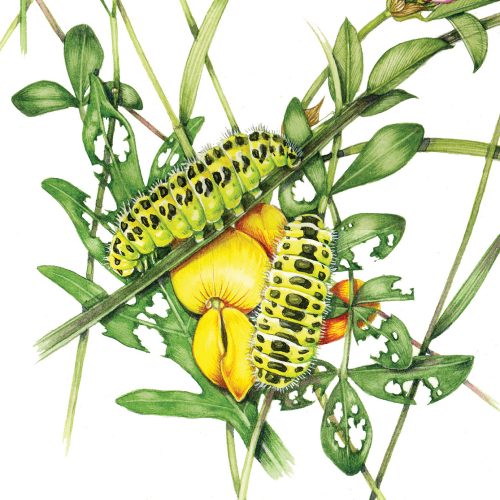
Bird’s-foot Trefoil: Where to find it?
This blog is in praise of a small, common wildflower which grows in grasslands. It spreads across the ground, and is low growing (rarely higher than 20cm). It favours sandy soils, but is tough and grows in a wide selection of substrates, and is able to grow in most places across the UK.
Bird’s-foot trefoil, Lotus corniculatus, has several colloquial names. You may know it as Bacon and Eggs (or Eggs and Bacon), Hen and chickens, Butter and eggs or even (rather unpleasantly) as Granny’s toenails.

Bird’s-foot trefoil Lotus corniculatus
How can you identify Bird’s-foot trefoil?
It’s a member of the pea family, being a Legume. This family embraces peas, beans, vetches and clovers. All have distinctive compound leaves, and the way flowers and seed pods are arranged also shows them to be part of the Legume (Fabaceae as was) family.
Leaves are lobed, like clovers. They’re downy, and made of five leaflets. However, often the lowest two leaflets are bent backwards, so the leaves may initially seem to be tri-partite.
Flowers are in clusters of 2 to 7, at the top of flowering stems. Buds are flushed red-orange, and the flowers are a golden yellow.
Seed pods are straight, and point outwards, giving the impression of the claws on the foot of a bird (hence the name).
Stems are solid, and woody at the base.
(As an aside, one of my favourite go-to online identification guides is, as always Naturespot. It’s really helpful in pinpointing the important characteristics of a plant, and has lots of good photographic reference of plants and animals of the UK.)

Bird’s-foot trefoil L. corniculatus
Bird’s-foot Trefoil and Butterflies
This little flower punches well above its’ weight when it comes to supporting insects.
It’s the main food plant for a wide range of butterflies. These include the Common blue Polyommatus icarus, Dingy skipper Erynnis tages. Clouded yellow Colias croceus, Green Hairstreak Callophrys rubi , Wood white Leptidea sinapis, and Silver-studded blue Plebejus argus.
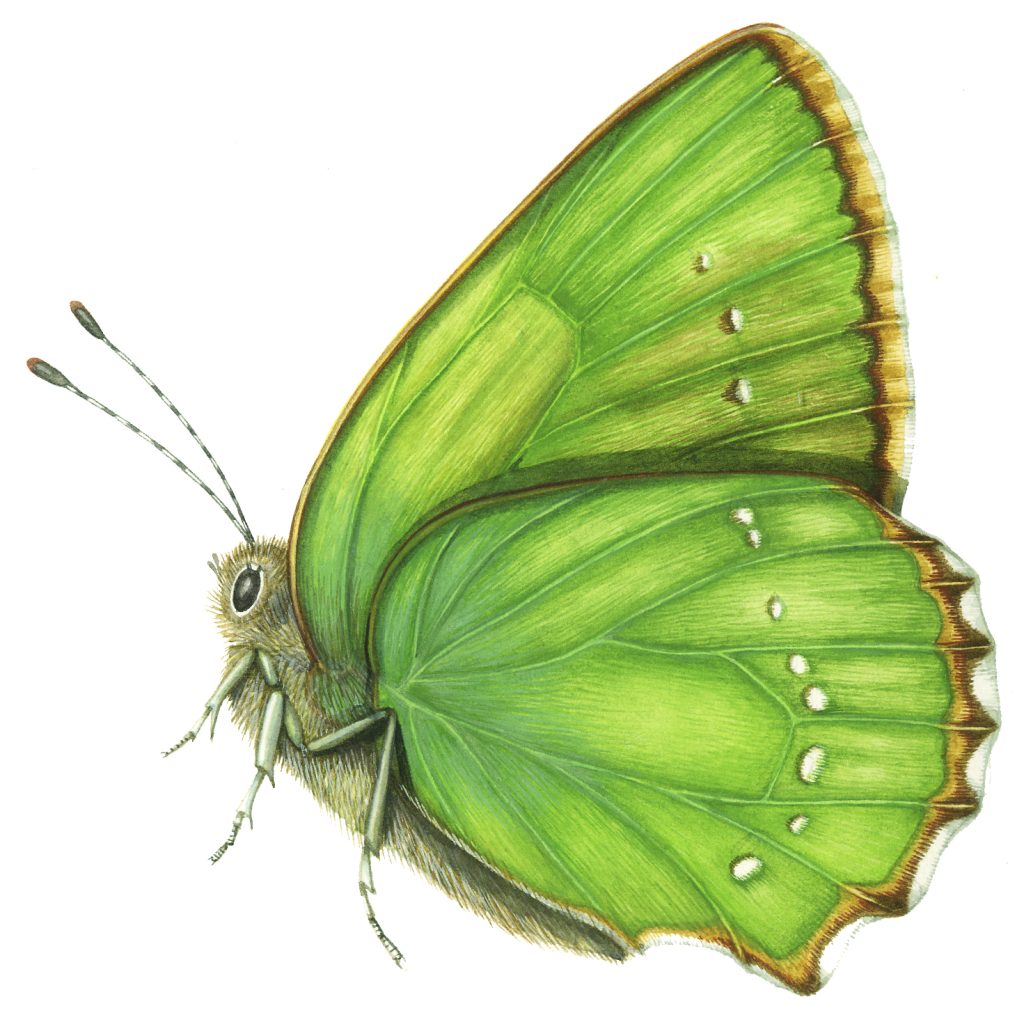
Green Hairstreak Callophrys rubi
It also feeds the caterpillars of the Six-spot moth Zygaena filipendulae, a familiar black day-flying moth with striking red spots.
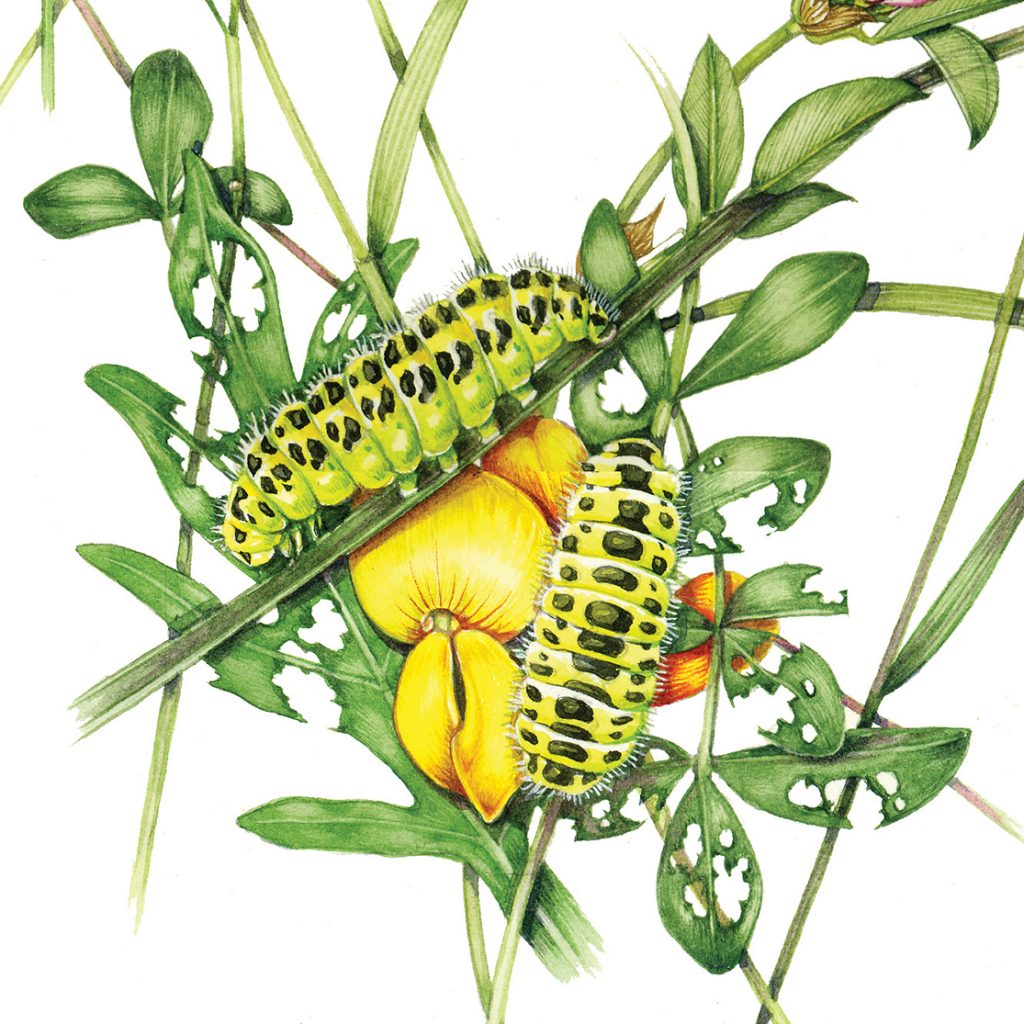
Six spot burnet moth caterpillars Z. filipendulae on Bird’s-foot trefoil
In fact, the moth spends its whole life in grasslands rich with Bacon and Eggs, feeding from nectar from the flowers as an adult after pupating on the stems of long grasses.

Emergent adult Six-spot moth Z. filipendulae
The life-cycle of the Blue butterflies is astonishing and complex, involving ants, the trefoil (or other plants), and deception. If you don’t already know about it, do check out my blog.
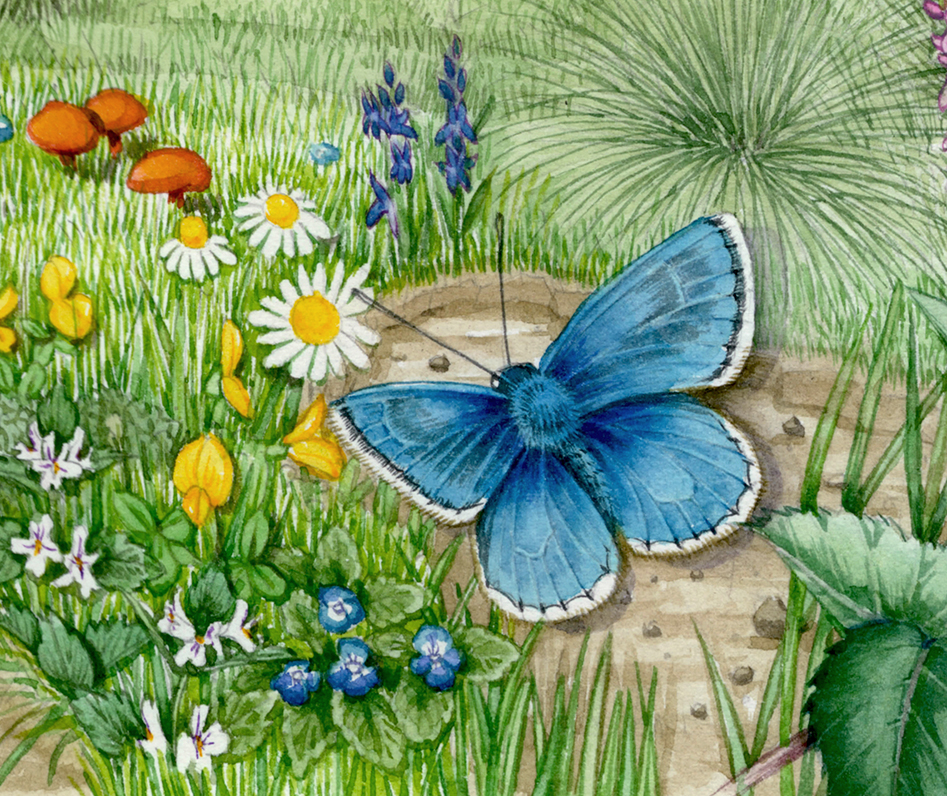
Common blue P. icarus on Bird’s-foot trefoil (detail of larger illustration)
Bird’s-foot Trefoil and Pollinators
Not only does it support a wide range of caterpillars, some of which are on Butterfly Conservation’s radar as needing preservation (like the Dingy skipper Erynnis tages), but it also produces lots of nectar. This works for other pollinators, as well as the butterflies.
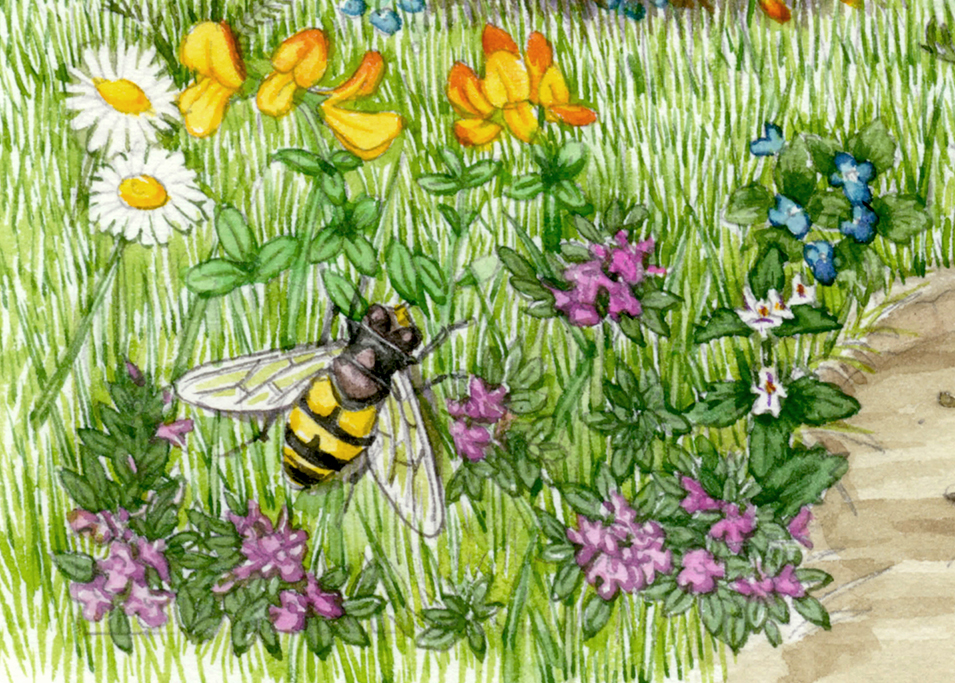
Hoverfly with Bird’s-foot trefoil (detail of larger illustration)
The flowers are bilaterally symmetrical, or zygomorphic (for more on flower shape terminology click here). They consist of a Standard petal, two wings, and a fused corolla tube known as a keel. This design allows the flowers to effectively attach pollen to visiting bees, before rewarding them with nectar.
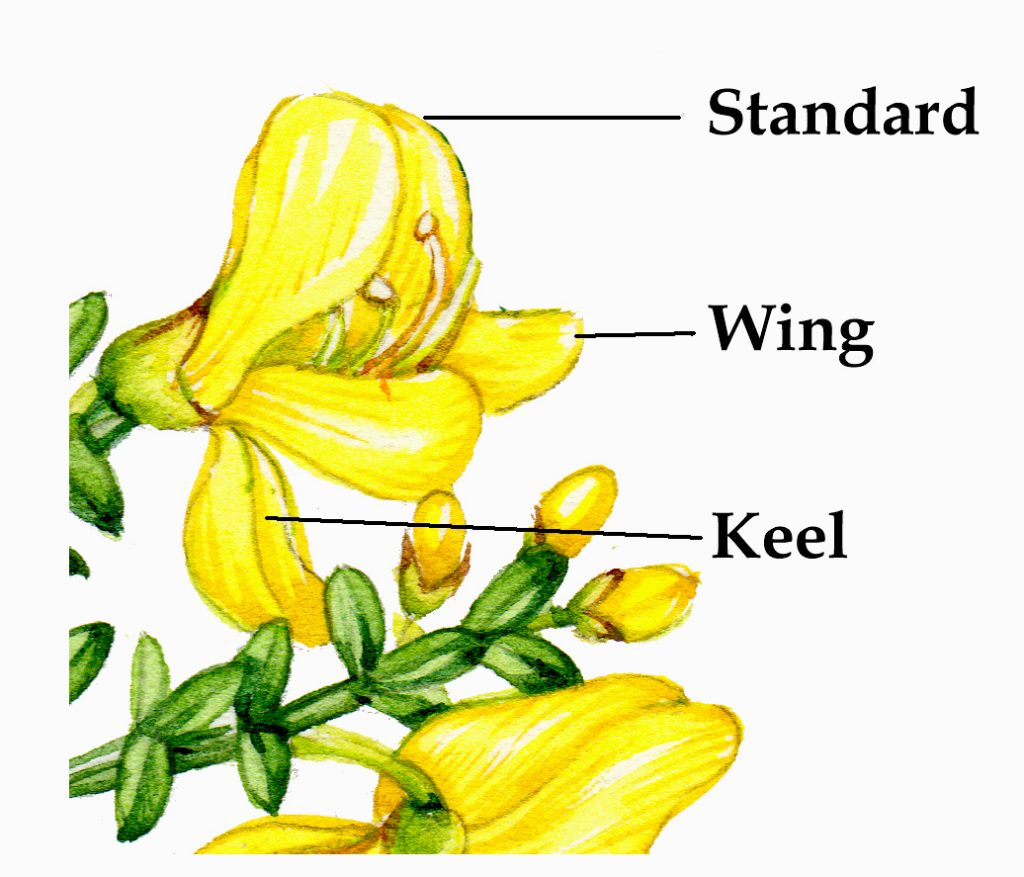
Annotated zygomorphic Broom flower Cystisus scoparius, another legume species
Only larger insects like wasps, bees, and bumblebees can manipulate these flowers effectively which makes them the main pollinators, and the main beneficiaries of the copious nectar supplies.
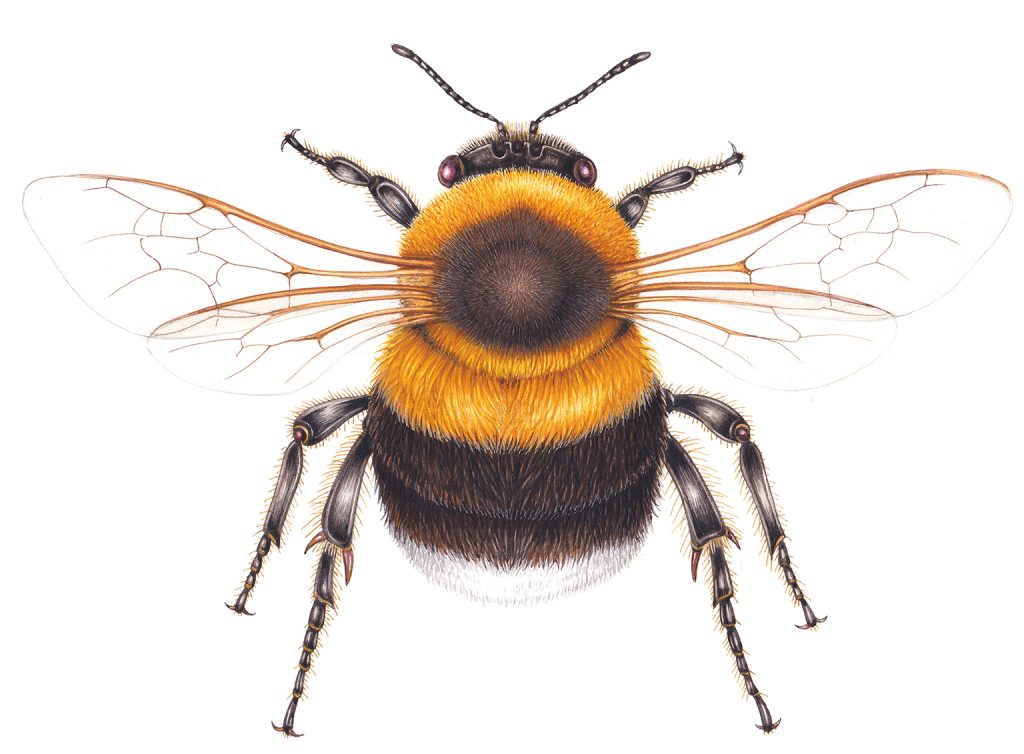
Garden bumblebee Bombus hortorum
Nitrogen fixing
All legumes have nodules on their roots. These are bumps where Rhizobia bacteria live, in a symbiotic relationship with the plant. The bacteria are safe within the tissue of the root, and here they transform atmospheric nitrogen into mineral nitrogen which the plant uses for growth. Interestingly, there seems to be more of this nitrogen fixing activity during the early growth stages of the wildflower, when it’s growing most vigorously. (Click here for more.)
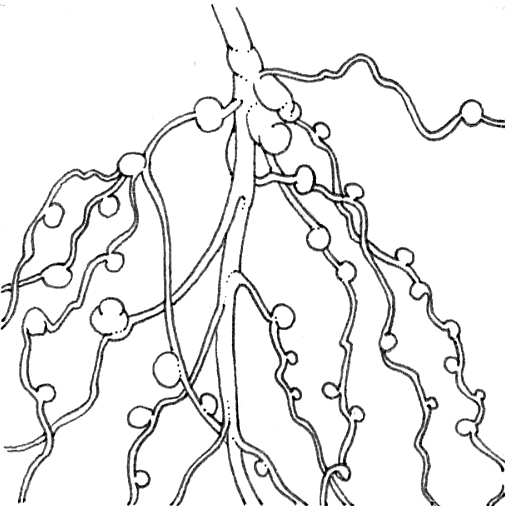
Root nodules
This nitrogen fixing ability benefits other plants too, and improves soil health. Many farmers (such as my friends at Chapel House Farm who have graciously let me have arm-fulls of their Bird’s-foot trefoil to draw in the past) use Bird’s-foot trefoil as a green cover crop, to ensure soil is enriched with nutrients vital to growing commercial crops.
Grazing and Sileage
Bird’s-foot trefoil also makes for excellent grazing. It’s nutritious, and, once established, grows fast. The flowering season is comparatively long and it also re-seeds readily from those long bird-foot pods. It can grow amongst grasses which support the slender stems of the plant, so long as the grass doesn’t out-compete it. The plant doesn’t cause bloat in cows like clover, alfalfa and other legumes can. This makes it a good food crop for cattle.
It can be used for hay and sileage too, replacing alfalfa crops in areas with acidic, boggy soils. However, in the USA it’s success can also cause problems and it can become an invasive species in some areas.
For more on the role it plays in farming, click here.

Bird’s-foot trefoil L. corniculatus
Other similar species
There are other trefoils which look similar to Lotus corniculatus, but these are generally far less common.
Greater Bird’s-foot trefoil Lotus pedunculatus tends to be larger and more hairy. It grows higher and favours marshy habitats. Narrow-leaved Bird’s-foot trefoil Lotus tenuis has leaves which are four times longer than wide, whereas with the Common Bird’s-foot trefoil that’s a three to one ratio.
Other trefoils like the Lesser Trefoil Trifolium dubium and Black Medick Medicago lupulina do have yellow flowering heads, but these are more compact, and their fruits may look very different. Leaves are trifoliate and the plant is smaller.
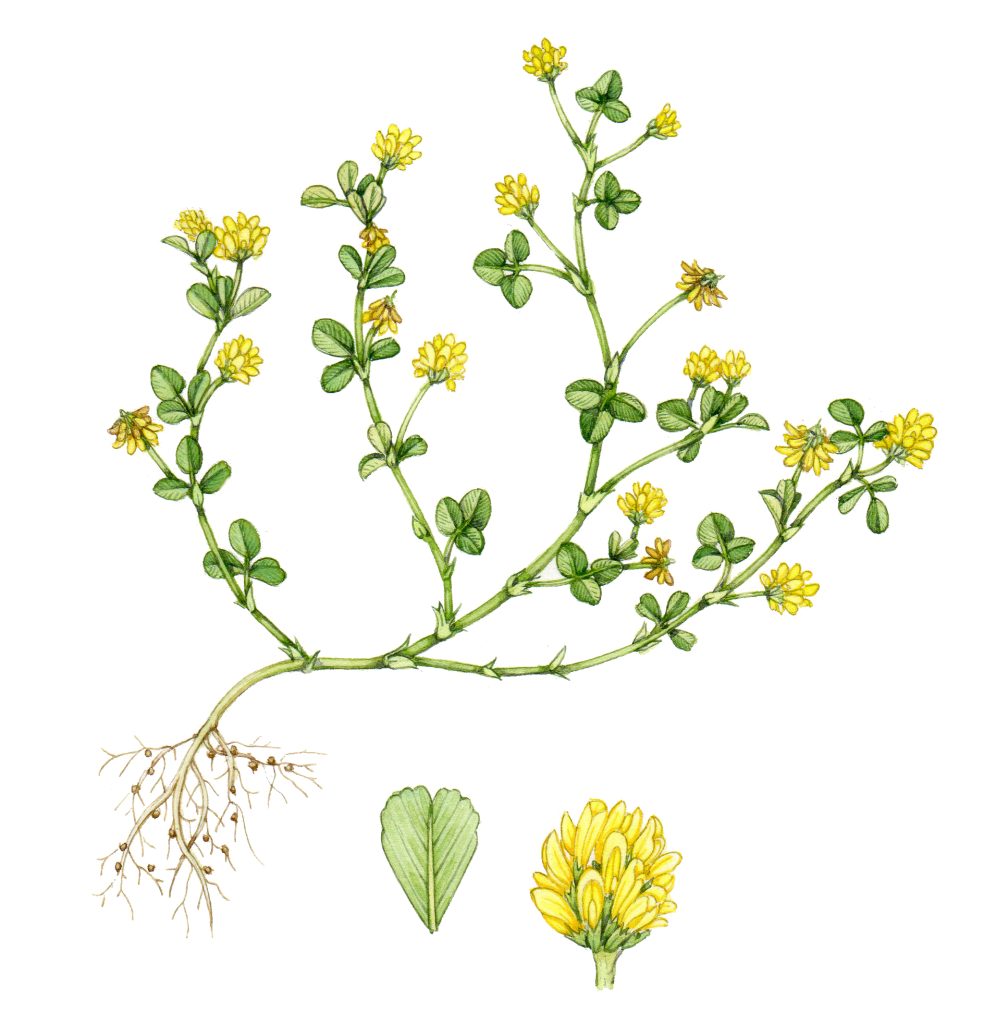
Lesser Trefoil Trifolium dubium
Bird’s-foot Trefoil, Butterfly conservation, and me
This blog stems from a recent job with “Chequered Skipper: Taking flight”, a project run by Butterfly Conservation. I was asked to create a filmed online workshop, showing in step by step detail how to complete a botanical illustration of this important wild flower. This free event will happen on January 11th. Please sign up here if you’re interested.

Me illustrating Bird’s-foot trefoil for the free Butterfly Conservation online event
Conclusion
This plant is fabulous for many reasons. It’s easy to recognise, which makes it engaging for amateur botanists, kids, and people out for a walk. Providing nectar for pollinators and food for caterpillars, it’s important for insects. As a good green crop, possible hay replacement, and for safely feeding grazing cattle it serves the farming community well. It also improves soil health.
Ladies and Gentlemen, I give you the Bird’s-foot trefoil. What more could anyone want from a humble wildflower?
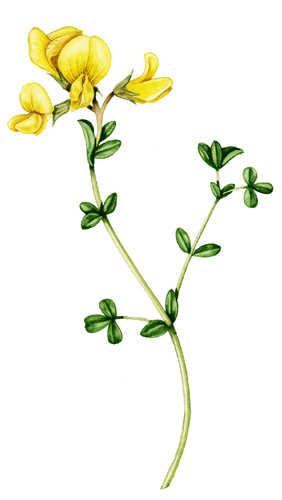
Bird’s-foot trefoil L. corniculatus


Wonderful blog Lizzie. Many thanks.
Hi Lizzie
Thanks so much for this info … itvis so helpful. A friend sent me the Eventbrite link to your workshop on painting Bird’s Foot Trefoil on 11 Jan but it seems that, unfortunately, sale of tickets has ended. Will a recording be available at some stage for purchase?
Regards
Susana Smith, Tasmania
Hi Susana
Although youll miss out on the introductions and me being there to chat and answer questions, I’ve created a page on this webiste where you can access the film, and where the resources needed to complete the workshop are listed: https://lizzieharper.co.uk/butterfly-conservation-illustrating-the-birds-foot-trefoil-resource-page/ Hope this helps, and so sorry the booking is now closed, this is Eventbrite’s decision.
Yours
Lizzie
Hi Lizzie, have to admit I only knew of the Birds Foot not the Lesser or about the Chequered Skippers attraction to it.
Every time I come to your blog I learn something, thank you for this.
Regards Peter
Peter, Im so glad you learn new stuff! So do I, every time I have a new species to illustrate!
Hi Lizzie, watched the video from the link above, great instruction especially about the transparent green layers, has helped enormously.
Thats great to hear, Peter. yes, layering to build up intensity of colour can be really useful. Glad its a technique that works for you.